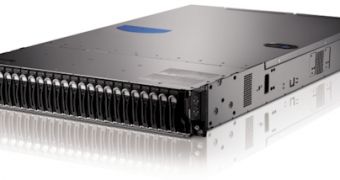ClusterVision, a company specialized in developing high performance compute, storage and database clusters, has announced the opening of a new HPC cluster system at the Technical University of Ilmenau based on Dell’s PowerEdge servers.
The resulting HPC cluster consists of 49 Dell PowerEdge R815 servers with AMD Opteron 6134 and 6136 eight-core processors, running a Fraunhofer File System.
One PowerEdge R715 server with AMD Opteron 6128 CPUs operates as the storage head node, and four other PowerEdge R510 servers with Intel Xeon 5506 processors deliver the cluster's Serial Attached SCSI (SAS) storage.
The University has a single Dell PowerEdge R510 server as the metadata storage, and a Dell PowerVault MD1200 modular disk storage array for 196TB of gross storage capacity and 150TB of available capacity.
An InfiniBand network delivers high bandwidth and low latency for fast server-to-server interconnects.
"Classical servers normally work at 30 percent capacity at most. In HPC, we need a maximal usage of CPU and memory -- so in the last year our overall cluster usage was about 95 percent,” said Hennig Schwanbeck, IT Manager of Datacentre Administration, at the Technical University of Ilmenau.
“With our new HPC Cluster, we have greater storage capacity and can achieve a higher workload per server, so we're maximising the effectiveness of our infrastructure.
“The Dell PowerEdge R815 servers also offer more memory in a single machine, and it's more easily accessed, so there's more availability for our shared memory applications, and we no longer have to split the load across two or more machines," concluded Schwanbeck.
According to the University’s estimates, the new cluster system will provide its students with 7 times more processing power that what they had previously at their disposal.
Furthermore, the Energy Smart technologies used by Dell for its PowerEdge servers allow the Univeristy to maximize performance per Watt, allowing TU Ilmenau to reduce its power and cooling costs by between 15 and 20 percent.

 14 DAY TRIAL //
14 DAY TRIAL //